Brad Evans interviews James Martel in the Los Angeles Review of Books:
BRAD EVANS:For those of us who remain deeply concerned with understanding the worst episodes in human history, the life and work of Walter Benjamin still appear all too resonant. This in part has something to do with the tragedy of what he came to represent, along with the undoubted brilliance of his insight and challenges to political dogmatism. What is it about Benjamin that captures your attention as an author and critic?
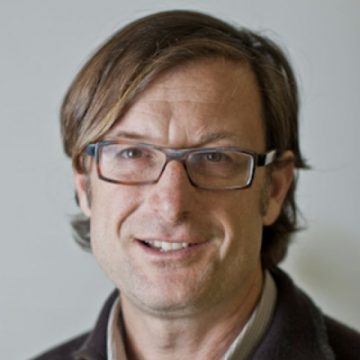 JAMES MARTEL: I think that Benjamin has never been as relevant to questions of politics as he is today with the exception of his own lifetime. As I read him, Benjamin offers one of the best explanations both for the ongoing resilience of capitalism, despite all of its predations and all the instability that it creates, as well as the connection between fascism and liberalism that we are seeing being expressed today. He also offers, I think, the best way to understand how to address our contemporary moment and how to resist and upend capitalism, liberalism, and fascism all round.
JAMES MARTEL: I think that Benjamin has never been as relevant to questions of politics as he is today with the exception of his own lifetime. As I read him, Benjamin offers one of the best explanations both for the ongoing resilience of capitalism, despite all of its predations and all the instability that it creates, as well as the connection between fascism and liberalism that we are seeing being expressed today. He also offers, I think, the best way to understand how to address our contemporary moment and how to resist and upend capitalism, liberalism, and fascism all round.
More here.

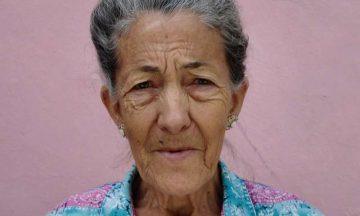 The BCG vaccine has a broad, stimulating effect on the immune system. This gives it an effective preventive action against various infections—possibly also against COVID-19. New studies are investigating that. BCG is frequently given to children, but a double-blind randomized clinical study, a collaboration between Radboud university medical center and the National and Kapodistrian University of Athens shows that elderly people also benefit from it. The results are published in Cell. At Radboudumc, Professor of Experimental Internal Medicine Mihai Netea is conducting research into this protective effect against various infections by the BCG vaccine, an effect called “trained immunity.” Prof. Mihai Netea said, “Two years ago we started the ACTIVATE study, with the aim of showing whether BCG vaccination could protect against infections in vulnerable
The BCG vaccine has a broad, stimulating effect on the immune system. This gives it an effective preventive action against various infections—possibly also against COVID-19. New studies are investigating that. BCG is frequently given to children, but a double-blind randomized clinical study, a collaboration between Radboud university medical center and the National and Kapodistrian University of Athens shows that elderly people also benefit from it. The results are published in Cell. At Radboudumc, Professor of Experimental Internal Medicine Mihai Netea is conducting research into this protective effect against various infections by the BCG vaccine, an effect called “trained immunity.” Prof. Mihai Netea said, “Two years ago we started the ACTIVATE study, with the aim of showing whether BCG vaccination could protect against infections in vulnerable  It is a truism among scientists that our enterprise benefits humanity because of the technological breakthroughs that follow in discovery’s wake. And it is a truism among historians that the relation between science and technology is far more complex and much less linear than people often assume. Before the 19th century, invention and innovation emerged primarily from craft traditions among people who were not scientists and who were typically unaware of pertinent scientific developments. The magnetic compass, gunpowder, the printing press, the chronometer, the cotton gin, the steam engine and the water wheel are among the many examples. In the late 1800s matters changed: craft traditions were reconstructed as “technology” that bore an important relation to science, and scientists began to take a deeper interest in applying theories to practical problems. A good example of the latter is the steam boiler explosion commission, appointed by Congress to investigate such accidents and discussed in Scientific American’s issue of March 23, 1878.
It is a truism among scientists that our enterprise benefits humanity because of the technological breakthroughs that follow in discovery’s wake. And it is a truism among historians that the relation between science and technology is far more complex and much less linear than people often assume. Before the 19th century, invention and innovation emerged primarily from craft traditions among people who were not scientists and who were typically unaware of pertinent scientific developments. The magnetic compass, gunpowder, the printing press, the chronometer, the cotton gin, the steam engine and the water wheel are among the many examples. In the late 1800s matters changed: craft traditions were reconstructed as “technology” that bore an important relation to science, and scientists began to take a deeper interest in applying theories to practical problems. A good example of the latter is the steam boiler explosion commission, appointed by Congress to investigate such accidents and discussed in Scientific American’s issue of March 23, 1878. It is the nature of progress that what is now cutting-edge will, with the passing of time, become traditional. And it is the nature of human beings to remake and refine what has worked in the past, and call it new.
It is the nature of progress that what is now cutting-edge will, with the passing of time, become traditional. And it is the nature of human beings to remake and refine what has worked in the past, and call it new.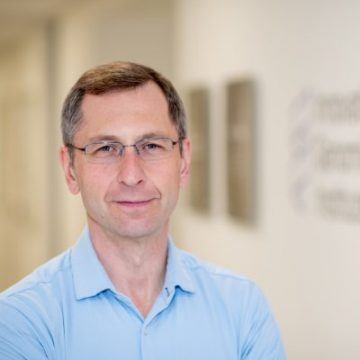 Not too long ago nobody carried a mobile phone; now almost everybody does. That’s the kind of rate of rapid progress we’re seeing with our ability to directly edit genomes. With the use of
Not too long ago nobody carried a mobile phone; now almost everybody does. That’s the kind of rate of rapid progress we’re seeing with our ability to directly edit genomes. With the use of 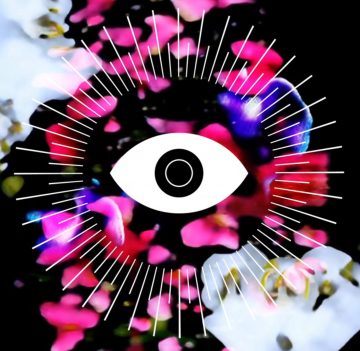 Jack Gallant never set out to create a mind-reading machine. His focus was more prosaic. A computational neuroscientist at the University of California, Berkeley, Dr. Gallant worked for years to improve our understanding of how brains encode information — what regions become active, for example, when a person sees a plane or an apple or a dog — and how that activity represents the object being viewed.
Jack Gallant never set out to create a mind-reading machine. His focus was more prosaic. A computational neuroscientist at the University of California, Berkeley, Dr. Gallant worked for years to improve our understanding of how brains encode information — what regions become active, for example, when a person sees a plane or an apple or a dog — and how that activity represents the object being viewed.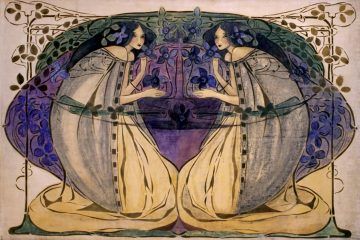 Most people have heard of Art Nouveau, but few remember two of the most influential figures in its conception. (No, not Gustav Klimt.) They were a pair of sisters named Margaret and Frances MacDonald, who, along with their Glasgow School of Art classmates Charles Rennie Mackintosh and Herbert MacNair, comprised the Glasgow Four. Art Nouveau wouldn’t be what it is without them.
Most people have heard of Art Nouveau, but few remember two of the most influential figures in its conception. (No, not Gustav Klimt.) They were a pair of sisters named Margaret and Frances MacDonald, who, along with their Glasgow School of Art classmates Charles Rennie Mackintosh and Herbert MacNair, comprised the Glasgow Four. Art Nouveau wouldn’t be what it is without them. The painter and broadcaster Lachlan Goudie could not introduce The Story of Scottish Art in a more personal fashion. His preface begins, ‘My father, Alexander Goudie, was a painter; I grew up surrounded by Scottish art, I’ve been depicted in it and I’ve spent my adult life trying to add in some small way to its legacy. I am not, however, an academic, and this is not a textbook.’ Whether those words are meant to offer relief or be a warning is unclear, but I think the implication is that academics are pedantic and textbooks dry. Fairly often, alas, academics do not seem to be aware that they might treat language as a collaborator, even a medium, and textbooks, unless written exclusively in symbols and figures, in which case I must trust that they are beautiful, are unintelligible.
The painter and broadcaster Lachlan Goudie could not introduce The Story of Scottish Art in a more personal fashion. His preface begins, ‘My father, Alexander Goudie, was a painter; I grew up surrounded by Scottish art, I’ve been depicted in it and I’ve spent my adult life trying to add in some small way to its legacy. I am not, however, an academic, and this is not a textbook.’ Whether those words are meant to offer relief or be a warning is unclear, but I think the implication is that academics are pedantic and textbooks dry. Fairly often, alas, academics do not seem to be aware that they might treat language as a collaborator, even a medium, and textbooks, unless written exclusively in symbols and figures, in which case I must trust that they are beautiful, are unintelligible.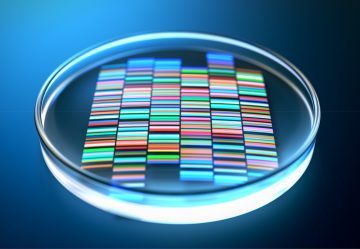 In their long-running effort to defeat cancer, medical researchers have made a startling discovery: A lot of the time, they have no idea how their anti-cancer drugs work. And, strange as it may sound, that is actually great news for future therapies. “We’re not saying these drugs aren’t good,” explains Ann Lin, a geneticist at Stanford University. They really do kill cancerous cells, often quite well; they just don’t do the job the way that their developers believed, she finds. Her work highlights how much of anticancer drug discovery is still based on trial-and-error searches. It’s as if your auto mechanic learned to fix your car by kicking the fenders and smacking the hood until it started. That technique might get the job done, but there would be no way to improve it or to figure out what went wrong if it failed the next time. Similarly, oncologists have often been forced to rely on drugs without a clear understanding of their mechanism of action, Lin notes; in essence, they were kicking and smacking the tumors at a molecular level.
In their long-running effort to defeat cancer, medical researchers have made a startling discovery: A lot of the time, they have no idea how their anti-cancer drugs work. And, strange as it may sound, that is actually great news for future therapies. “We’re not saying these drugs aren’t good,” explains Ann Lin, a geneticist at Stanford University. They really do kill cancerous cells, often quite well; they just don’t do the job the way that their developers believed, she finds. Her work highlights how much of anticancer drug discovery is still based on trial-and-error searches. It’s as if your auto mechanic learned to fix your car by kicking the fenders and smacking the hood until it started. That technique might get the job done, but there would be no way to improve it or to figure out what went wrong if it failed the next time. Similarly, oncologists have often been forced to rely on drugs without a clear understanding of their mechanism of action, Lin notes; in essence, they were kicking and smacking the tumors at a molecular level. Columns of smoke “spread their veils / Like funeral crape upon the sylvan robe / Of thy romantic rocks, pollute thy gales, / And stain thy glassy floods”. Poet Anna Seward wrote these lines in 1785, after seeing the forges, furnaces and lime kilns of Coalbrookdale in England — the cradle of the Industrial Revolution. It is among the first descriptions of industrial emissions as ‘pollution’, a term that invoked moral impurity, the corruption of the countryside. More than two centuries later, humanity’s polluting activities have devastating impacts on biodiversity, agricultural productivity and human health. Will it take a radical reimagining of our lifestyles and sociopolitical systems to end these disastrous mistakes? Or is it already too late to avoid even greater catastrophe?
Columns of smoke “spread their veils / Like funeral crape upon the sylvan robe / Of thy romantic rocks, pollute thy gales, / And stain thy glassy floods”. Poet Anna Seward wrote these lines in 1785, after seeing the forges, furnaces and lime kilns of Coalbrookdale in England — the cradle of the Industrial Revolution. It is among the first descriptions of industrial emissions as ‘pollution’, a term that invoked moral impurity, the corruption of the countryside. More than two centuries later, humanity’s polluting activities have devastating impacts on biodiversity, agricultural productivity and human health. Will it take a radical reimagining of our lifestyles and sociopolitical systems to end these disastrous mistakes? Or is it already too late to avoid even greater catastrophe?